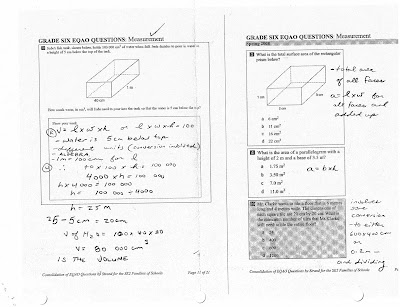Some theoretical points from the Cuisenaire rods:
The following items have been taken from the literature that came with the rods. I wanted to read it before looking at the student responses and moving forward.
Our observations and descriptive feedback:
On another level, check out how the Cuisenaire rods can be used to learn some grammar rules associated with learning English. It is a method known as "Silent Way." More information can be found here: https://en.wikipedia.org/wiki/Silent_Way.
Fraction Equivalency:
Hopefully, the idea of equal fractions makes some sense as you have picked and played with the rods. A few weeks ago, when we first were chatting about fractions, we looked at this example:
When I arrive at school today, I will photograph a model of the "chocolate bars" using Cuisenaire rods to show how the idea of equivalency works. We will then walk through a guided lesson and make some connections to the work you will be responsible for in the textbook.
 |
| An example of Cuisenaire rods in action. (1/3=6/18) |
In the class is a couple of sets of Fraction Circles that you can play and investigate some of the concepts shared in that video.
 |
| All of these circles, each one being 1.0 are "sliced up" in different ways. |
 |
| The green portion is still half of a circle at 5/10. The purple portion is also half but looks like 6/12. |
I am in the process of coming up with a rule for explaining how the lowest term can be expressed for a fraction using the rods. At this point, I think the reduced fraction must be the same size (length) or rods, but with the least number of rods used.
For example, 6/12 involves the use of 12 cubes, whereas 1/2 only involves the use of 2 rods.
For 3/12, we have 12 cubes, whereas 1/4 only inolves using 4 rods.
Rob, from Math Antics, take a shot at explaining how fractions are equivalent.
 |
| # 3, 4, 6, 8, 9, 10 |
In addition to the class lesson, this may also help with understanding how to reduce fractions to the Lowest/Simplest term.
Dance snapshot:
We will begin our presentations next week. Here is a short look at the various groups at work.






































































